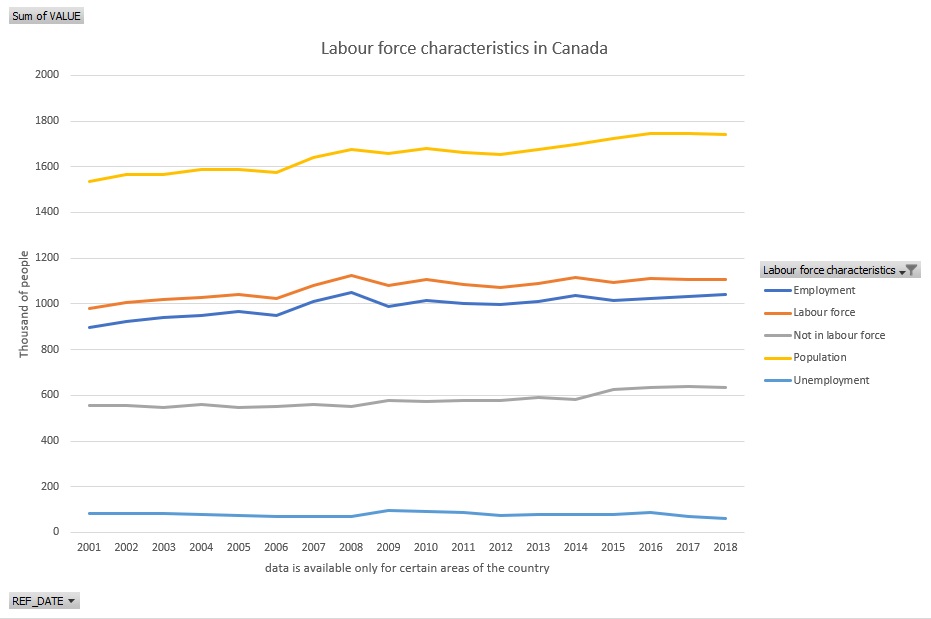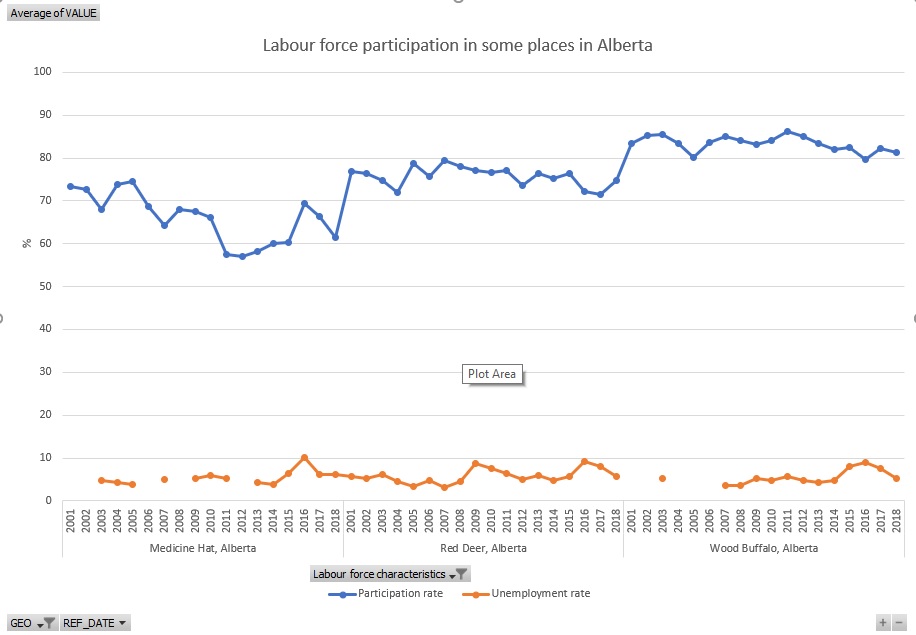To work or not to work, the economy is "great" in Canada
Published on 22-09-2019
One of the leading indicators of the healthiness of our economy is, we are being told over and over again by mainstream economists and the media, is the rate of unemployment. The media is boasting the success of economic recovery, after the crash of 2008, by publishing figures about job growth. There is some yes, but mainly in the gig economy. Now we have more Skip the Dishes deliverers and Uber drivers and we supposed to feel good about this. Well, I decided to dig up some numbers and look at them carefully.
Let’s have a look at the labour characteristics in Canada in absolute numbers. My source of information is from StatsCan’s Open Government website. And here is the original of the file.
First, some words about unemployment. It is really relatively not high. Who are these people? They are able bodied persons who are actively looking for work but can not find one. But it is much more revealing to look at the grey line: Not in labour force. It is a substantial portion of the population. Half of the mass of employed people are not in the labour force! So, who are they? They are people who are able to work but do not do so and they are not even looking to find one. Like housewives, members of the family taking care of the elderly or disabled people at home (unpaid labour!) and yes, people who are no longer unemployed for StatsCan because they could not find work for a prolonged time and not even looking for work any more. They have dropped out of the labour force. Yeah, there are people who say I am more valuable at home living off of my husband’s or wife’s wage than to work for, let’s say, $12.50 an hour. I would argue that their numbers went up considerably after the crash of 2008. But I can not prove it, because I couldn’t find the statistics relevant to this. But one thing we can see from the data I have is that the portion of people not in the labour force is huge and it is steadily climbing since 2001.
I wanted to have a look closer to home, Alberta. I wanted to see, for example, how these numbers look in Calgary or Fort McMurray after the oil industry’s bust. But I am out of luck. No data is available. The way StatsCan’s data is structured is a mystery to me. They have the data for certain geographical area but not all. Anyway, I am going to share with you the next picture. They are curves of rates and not absolute values. And they go against of what I would argue for Calgary and other places. This participation rate is growing, except for Medicine Hat, where it dropped in 2011 to 58%! Nevertheless, on the national scale, I repeat, the number of people not in the labour force is growing.
All the employed people have to maintain the people who are not working. What a burden on them! Great economy, isn’t it? Any political party raising concern about the super high level of real unemployment? I have not heard anything; they are cheering for the “low” unemployment rate.

